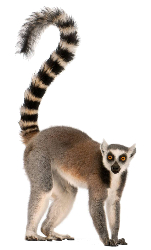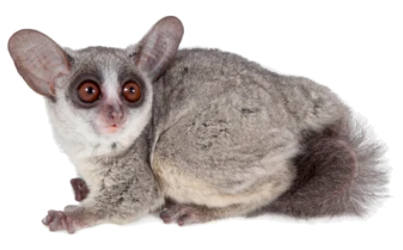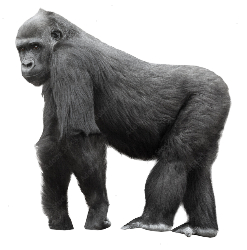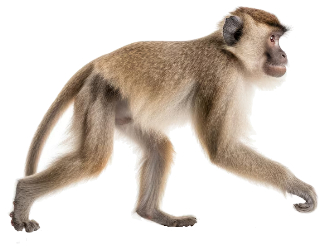 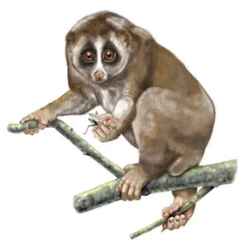 Primates are an order of mammals. Included in this order are lemurs, bush babies, lorises, tarsiers, monkeys, apes, and of course, humans.
Primates are an order of mammals. Included in this order are lemurs, bush babies, lorises, tarsiers, monkeys, apes, and of course, humans.Characteristics of most primates represent adaptations to the challenging environment they faced among the tree tops, and include large brain sizes, binocular vision, colour vision, vocalizations, shoulder girdles allowing a large degree of movement in the upper limbs, and opposable thumbs that enable better grasping and dexterity.
Primates range in size from Madame Berthe's mouse lemur, which weighs just 30 grams, to the eastern gorilla, weighing over 200 kilograms. There are hundreds of species of primates, and new primate species continue to be discovered: over 25 species were described in the 2000s, 36 in the 2010s, and six in the 2020s. Primates have large brains (relative to body size) compared to other mammals, as well as an increased reliance on sight at the expense of the sense of smell, which is the dominant sensory system in most mammals. These features are more developed in monkeys and apes, and noticeably less so in lorises and lemurs. Some primates, including gorillas, humans and baboons, are primarily ground-dwelling rather than arboreal.
Primates are among the most social of all animals, forming pairs or family groups, and long-term bonds. Primates have slower rates of development than other similarly sized mammals, reaching maturity later, and they also have longer lifespans. Primates are the most cognitively advanced animals, with humans (genus Homo) capable of creating complex languages and sophisticated civilizations. Non-human primates can make and use tools. All communicate using facial and hand gestures, smells and vocalizations. Humans share a significant amount of DNA with other primates, and are most closely related to chimpanzees and bonobos. Humans and chimpanzees share about 98.8% of their DNA. Like most primates, humans have flat nails, sensitive pads on the tips of their fingers and toes, and a well-developed collarbone. However, humans have longer opposable thumbs relative to the length of their fingers than other primates. This allows them to grasp and manipulate objects with great strength and control. They also have a large and complex prefrontal cortex, which is associated with higher cognition. |
